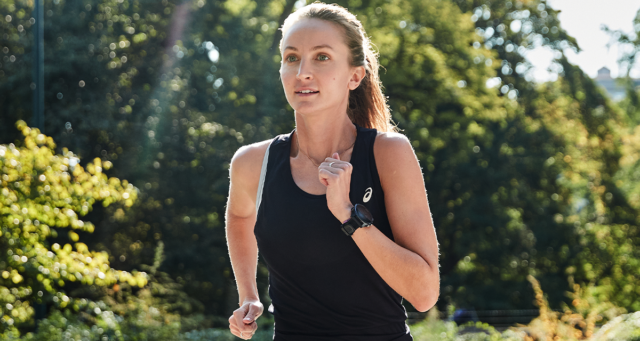Running plateaus and their causes
Runners of all levels go through plateau stages, those times when you just can’t seem to get any faster or run any farther. There are lots of reasons why! Sometimes people are happy with their running speeds or distances and don’t feel the need to make any changes. Some runners don’t know how to go about making improvements. Sometimes injuries require a maintenance mode instead of building mode. Seasonal changes can make running or motivation hard to maintain. Sometimes life just gets in the way of focusing on running. Here’s how to break out of a running plateau when it happens to you.
Personal story: I was stuck in a running plateau for three years. I ran 3-6 miles 3-5 days a week at an 8-9 minute pace per mile. There was nothing wrong with it. I was moderately happy with my running, but it felt like I just never got any faster. So eventually I took some simple steps to kick things up a notch! If you’re an everyday runner who’s also trying to escape a plateau, consider my tips below.
How to break a running plateau
1. Figure out and set a goal
Setting achievable goals is a challenging thing. First, it’s important to take some time to think about what your overarching running goals are. Once you identify the big goal you can set the little goal that will get you started. Do you want to run a 5K? Then maybe your goal is to run two minutes longer every time you run for a month. Do you want to improve your pace? Then make your goal to run intervals twice a week. Do you want to run a marathon? Then chose one and start a training plan. Setting achievable goals is about focusing on why you want to improve and setting a goal that will get you started!
2. Run with a friend
Friends push us to run a little faster or a little further than we would have otherwise. The social aspect helps us make time for running when we might otherwise choose a different activity. It takes a lot less willpower to run with a friend than it does to drag yourself off the couch on your own! Sometimes running with a friend is all it takes to push you to the next level.
Pro tip: If you don’t live in the same area as your running friends, use the challenge functionality or live tracking feature in the Runkeeper app so you can run together while apart.
3. Create a schedule
A lot of runners just run whatever distance they feel like on any given day with no thought of improvement. This can lead to plateaus, so if you want to escape, make a schedule! It can be flexible. For example: run 1 long run a week. Or it can be more definitive. For example: Run specific distances on specific days of the week. Having some sort of framework helps you push yourself just that little bit harder so you can start getting stronger again.
Pro tip: Set workout reminders in the Runkeeper app or create a goal to help keep you accountable.
4. Try interval training
Definition: Running “faster than normal” for a short period of time and then running or walking or standing until you are ready to do it again. You can repeat that cycle in a lot of different ways. There is no better way to get faster than to run intervals. Intervals are the best way to improve cardiovascular strength (i.e. strengthen your heart and lungs so you don’t get out of breath as easily). They strengthen your muscles in ways that are different from just running a steady distance. They also get you mentally used to running faster than your usual pace. That way later it does not feel weird or intimidating or scary to run fast! Anyone looking to improve their speed should seriously consider some form of interval training.
Pro tip: Use interval workouts in the ASICS Runkeeper app to mix things up
5. Run hills
There is nothing I hate more than straight uphill running. I know it can be miserable. The other side of that is when I do run hills constantly and then I get to a hill on a regular run that I can effortlessly float up, I feel like a rock star. Running hills uses different muscles than running on flat ground. It encourages the use of your glutes and abdominals, which might not be activated otherwise. Bonus: as those muscles get stronger you become a better runner. Check out this hills repeat workout to help take the guesswork out of training.
6. Add strength training
A lot of runners just run. For some people that works but adding the right kinds of strength training can benefit any runner. Focusing on exercises to activate and strengthen your glutes, abs, quads, hamstrings, calves, and hip flexors can make a huge difference in your running.
Runners at every level go through plateaus but there is always something new you can try to escape them and get better. Hitting a running plateau is an ideal time to refocus, so get out there, create a new goal, and make some changes.






